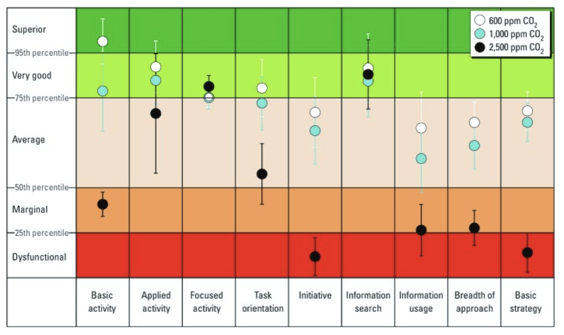The Obvious (and not so obvious) Benefits of Bringing Nature Into Your Office
“I am persuaded that no common air is so unwholesome as the air within a close room that has been often breathed and not changed.”
~ Benjamin Franklin
When the lockdown was announced last March, my partner and I found a month-to-month Airbnb in Sebastopol, California and the next day fled our apartment in San Francisco. Our goal was to be around fewer people and more nature.
This wasn’t our first time ditching civilization’s comforts for nature’s respite. Adventuring into nature is what led me to found Biome, an Oakland-based health and wellness company that rewilds indoor spaces to support physical and mental health. We make smart living walls that take up no floor space and produce a myriad of natural benefits like humidity, active air purification, and more.
Whether it’s the next viral mutation, wildfire smoke or some unforeseeable event, there are more than a few ways automated living walls can make your real estate better for the people inside.
Reduce stress and anxiety
Space-related anxiety is heightened right now, and for good reason. In the midst of this angst, there are workplaces to reoccupy and psychological safety to manifest. We need visual confirmation of the underlying health of a space.
Unfortunately, the current stresses are only compounding a pre-existing problem. Researchers at Stanford University have demonstrated that simply living in a city increases anxiety by 20% and mood disorders by 40%. Add to this eight hours of indoor work, isolated from calming natural influences and the risks are alarming. It’s why doctors in 34 states are already prescribing time spent in nature.
Adding greenery to the spaces people spend a significant amount of time in is an immediate way to harness the psychological benefits of nature. In addition to being a highly visible solution that can replace artwork, simply looking at plants is shown to lower cortisol levels and improve heart rate and blood pressure.

Combat pathogens naturally with humidity
COVID-19 risks are long from over. Moreover, many other pathogens continue to exist (flu). Low indoor humidity increases COVID-19 risk and other respiratory diseases. Higher humidity levels destroy the cell walls of viruses and lubricate our breathing passageways, booting our immune systems.,
Adding humidity throughout a building can be a major investment, is highly disruptive and can create other issues like mold. However, an alternative option is to add humidity locally in key areas by using plants that release moisture from their leaves through a process called transpiration. Add enough plants to an area like a conference room, and that micro-biome will have optimally humidified air and therefore naturally lower disease transmission.
Boost cognitive function with more oxygen
Your team was hampered by something in the air long before Covid-19. That’s because you and everyone else in your workplace exhale about 2.3 pounds of carbon dioxide every day and that adds up fast. In less than fifteen minutes the CO2 levels in a conference room can easily balloon to five or six times that of outdoor levels. Harvard researchers demonstrated a 50% reduction in cognitive function caused by typical indoor CO2 levels.
In a separate study, epidemiologists in the Indoor Environment Department at Lawrence Berkeley National Laboratory found that in common indoor CO2 levels, worker performance diminished significantly on six of nine metrics of decision-making performance.

Short of conference rooms automatically adjusting HVAC to push in more fresh air on demand, there are startlingly few effective ways to mitigate CO2-induced cognitive decline.
Thankfully, plants have been photosynthesizing carbon dioxide into oxygen for over three billion years, and they still do it supremely well. A Gensler study found that conference rooms with living walls demonstrated a 20-24% reduction in carbon dioxide. Even better, the plants also release oxygen, the most potent stimulant for brain function. Harvard researcher Joseph Allen estimates reducing workplace CO2 levels could translate to increased productivity of $6,500 per person per year. This does not include the other potential health benefits such as reduced sick building syndrome and absenteeism.
The challenge we now face is how to bring ecosystem benefits indoors in an impactful way. At Biome, we’ve made it simple; a new generation of living walls that are reliable, scalable and intelligent that can usher in a more resilient indoor future.
If you’re looking for help deploying nature in an optimized way you can reach me at collin@biome.us or ask the great team at Recreate for an introduction.
- Stanford researchers find mental health prescription: Nature.
- US Doctors are Prescribing Nature in 34 States
- The physiological effects of Shinrin-yoku
- Low humidity increases COVID-19 risk: Dry air could prompt further disease spread
- 2019 Novel Coronavirus (COVID-19) Pandemic: Built Environment Considerations To Reduce Transmission
- Low ambient humidity impairs barrier function and innate resistance against influenza infection
- Are you heating the planet when you breathe? - Slate
- Is CO2 an Indoor Pollutant? Direct Effects of Low-to-Moderate CO2 Concentrations on Human Decision-Making Performance
- Why Walls Should Live
- Research: Stale Office Air Is Making You Less Productive hbr.org

